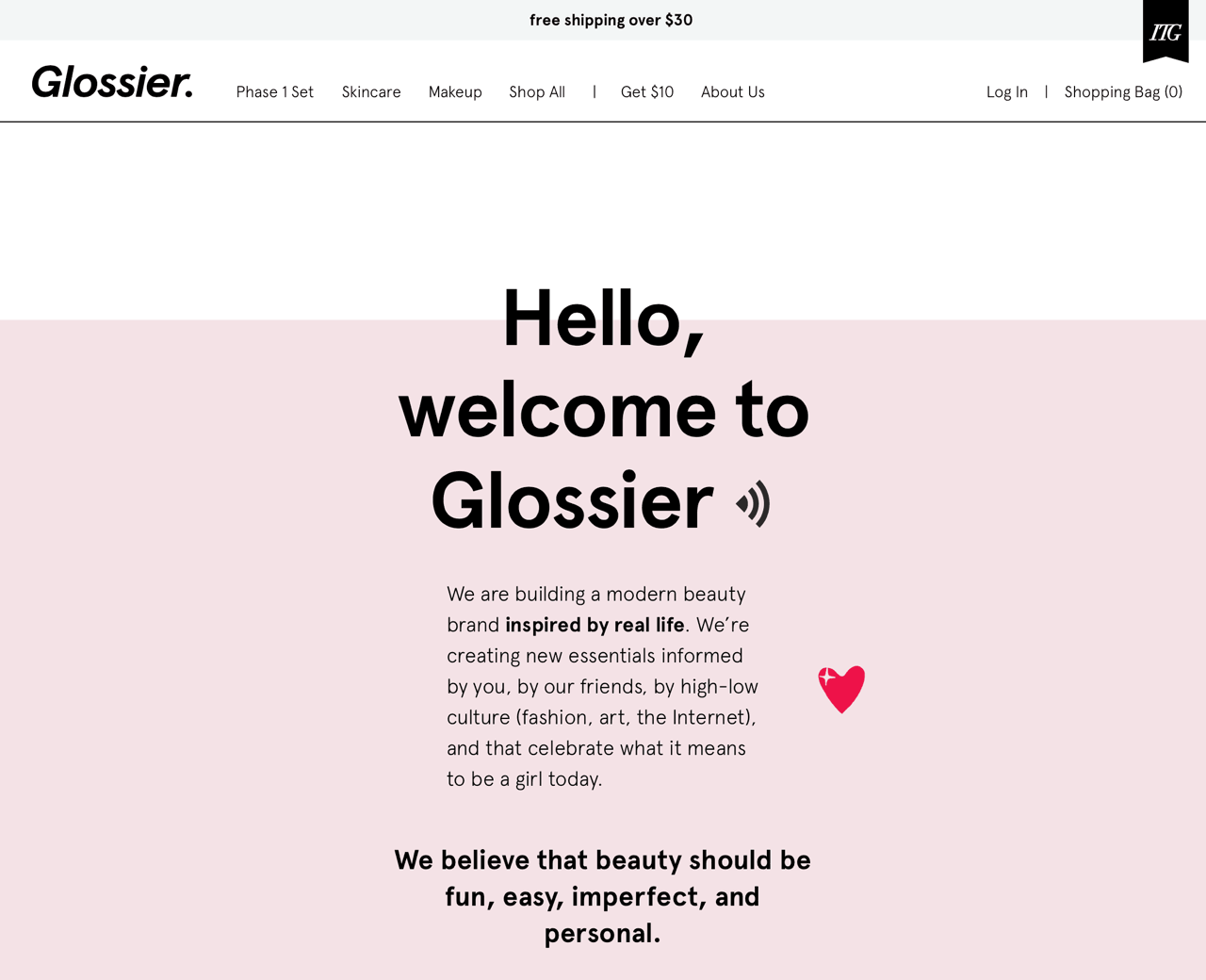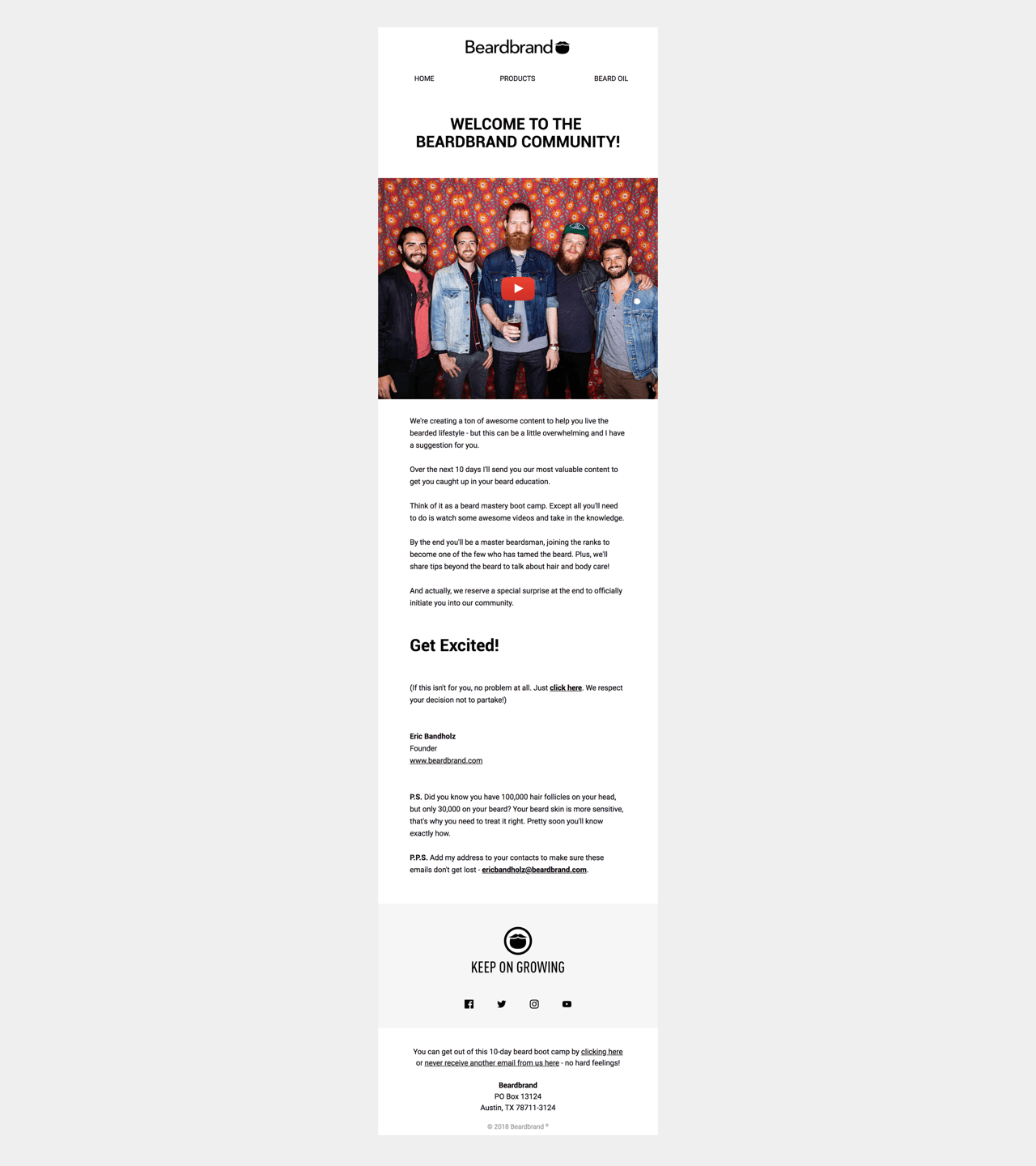Send 2,000 emails for free
Create engaging welcome emails for your store:

First impressions matter. And when someone signs up for your Shopify store’s emails, your welcome message sets the tone for everything that follows.
Your goal is to turn that initial moment into a long-term relationship, whether they just subscribed or made their first purchase.
That’s where welcome emails come in. In this guide, we’ll show you how to write one (or a full sequence), when to send it, and what to say to make a lasting impression.
Let’s get started.
Get these email templates for free
View email templates →A welcome email represents any email your brand sends after someone becomes an email subscriber or a customer.

As the name implies, this email type introduces the person to:
A company can use a welcome email as one-time marketing communication or a sequence of emails that nurture the recipient over time (something called a “welcome email sequence”).
Generally speaking, a welcome email sequence can be more effective for online stores as it allows them to create long-lasting relationships with their subscribers and customers. In this sense, such a sequence works like a nurturing campaign rather than a simple introductory message.
Welcome emails aren’t only useful for Shopify stores. In fact, they are popular among SaaS and subscription-based ecommerce businesses that need to convert their new users into paying, loyal customers.
A welcome email sequence can also help you introduce the people who run your brand — its employees, founders, or customers — and explain what makes your brand special. Notice how a welcome email from Rue’ CEO looks both like an introduction and a personal note 👇

Besides welcoming people, you want to showcase your products. As a matter of fact, if your business sells a few products, you can even create a welcome sequence for each product and educate the buyer about it. In this sense, a welcome sequence works as a traditional post-purchase sequence, albeit with a friendlier and less commercial focus.

Casper's campaign is awe-inspiring as they send that email on the third day after a subscriber signed up. Casper team doesn't assume subscribers are ready to buy at that point, so they nurture them patiently. Such is the power of welcome emails.
Last but not least, you can also use a welcome email to send out special discounts and offers. Companies sometimes use this approach when they position their email list as a loyalty program, such as Funfit does.

Welcome emails have proven their effectiveness many times over. They outperform nearly all other email marketing messages. According to GetResponse, the average open rate of welcome emails today is 83.63%, with an average click-through rate (CTR) of 16.60%.
For your email marketing strategy, welcome emails are the closest thing to guaranteed attention you’ll ever get. They reach subscribers at the exact moment their interest is highest, making them a prime opportunity to set expectations, introduce your brand, and drive an early conversion.
Now that we’ve covered the basics, we need to write those emails. Before you begin putting your copy together, we need to get two things out of the way.
The first one is that you can set up one welcome email — a literal greeting in email form — and call it a day. But for better results, it’s best if you try to set up a sequence of two to three emails.
The point of a welcome email sequence is to warm up your audience, to get them to know your brand, its products, and value proposition.
Most importantly, each email must have a specific goal in mind, such as:
Each email can be spaced between one to five days. It’s important to set it up so that your recipients don’t get multiple sequences at the same time (e.g., an abandoned cart email campaign, a promotional campaign, and so on).
The second point is that any email marketing software for ecommerce can do this work for you.
Apps like GSC Email Marketing make it easy to create automated welcome email sequences for Shopify, even if you have no experience.
With that out of the way, let’s take a look at five tips that will help you craft a killer welcome email for your Shopify store.
Have you ever made an expensive purchase like a car or a sofa, and after you decide to shake hands with the seller, you feel lighter and happier? You even start to treat the seller as a friend, asking them personal questions and laughing at their jokes (something you didn’t dare to do minutes earlier).
That’s your dopamine working its magic. It’s the reason why people feel an emotional rush after they make a purchase.
Whether a new email subscriber enters your list after downloading a lead magnet or making a purchase, at that moment, your company has an opportunity to introduce itself and create a long-lasting relationship with them.
You need to welcome your subscriber to your brand, literally. Such is the previous case of Rue or Glossier, as shown below.

💡It may seem like an afterthought, but how often do online retailers take their subscribers from the sign-up to a first-time buyer’s coupon? It may definitely work for brands with a budget allocated for such promos!
Finally, you need your brand to connect with your subscribers, transmitting your excitement to have them on your list, as Beardbrand does with their video and copy.

All of the previous welcome email examples are special because besides welcoming their audiences, they are personal.
For some brands, this means the founder is the one sending the message and signing the email. For others, it means talking to subscribers as if they were talking to a friend. Whatever the case, consider positioning your email as if it was a personal message.
What’s more, talk about your brand’s story and its purpose. If possible, show them who’s behind the brand — I’m talking about displaying the faces of those who run the company, like in the case of Beardbrand as shown above or The White Company as shown below.

This is a risky move for some companies, but as you saw, you need to engage your audience. Breaking the spell of the “big brand that talks to the feeble consumer” can work wonders, especially in an era where mistrust in companies and advertising is at an all-time high.
Welcoming your subscribers personally is all nice and dandy, but that won’t make a strong impression. To truly awe your audience, tell them what makes your brand unique. That’s your value proposition.
Most companies analyzed here use a bullet list called “Here’s what you’ll get” that explains their value proposition. In each point, explain how that relates to the recipient; what’s in it for them, as copywriters like to say.
In the case of Casper, it’s being up-to-date with the latest products, early access to promotions, news, and free shipping. For companies like Bite, it’s the way their products are manufactured, their quality, and their mission.

Although the two examples shown here are from the first email these companies sent, you can continue highlighting your value proposition throughout your sequence. This is particularly powerful if you offer something that requires an email of its own.
After an introduction and a value proposition showcase, you have warmed up your recipients to the point they may be inclined to take significant action.
“What’s a significant action?” you may ask. In this context, that would be anything that benefits your subscribers and your company simultaneously. For example:
Marketers are trained to always think about the next steps their target audience needs to take. In a similar way, you should think about what else your audience needs to do that makes sense for both of you.

The value of free education is often overlooked in the ecommerce industry. For your company, this shouldn’t be the case.
In the first email of your sequence, you want to keep it simple; follow the first two or three tips shared before, and you will be good to go.
But in the second and third emails, educate your audience. This can take different shapes, such as:
Ignoring to educate your audience is a mistake because it can be easily tied to your products. You could tell your audience how to fulfill their needs, with your products being the tools they need to do so, like Harry’s does in one of their emails

When they finish reading your educational content, they will be more likely to consider buying your products to bring your tutorial into action.
What makes welcome emails exceptional is that they are relatively easy to write and set up. You don’t need to use dynamic content, like abandoned cart email campaigns, or complex automations, like nurturing campaigns.
You simply need to send one to three emails, and you are good to go. With the five tips we showed you today, you are ready to get started writing your welcome email sequence.
Ivan Kreimer is a freelance content writer for hire who creates educational content for SaaS businesses like Leadfeeder and Campaign Monitor. In his pastime, he likes to help people become freelance writers. Besides writing for smart people who read sites like Getsitecontrol, Ivan has also written in sites like Entrepreneur, MarketingProfs, TheNextWeb, and many other influential websites.
You're reading Getsitecontrol blog where marketing experts share proven tactics to grow your online business. This article is a part of Email marketing section.
Try email marketing, free
Grow your list with free popups, send 2,000 emails for free.
Get started, it's freeSubscribe to get updates
Get beginner-friendly tips for growing your online business.